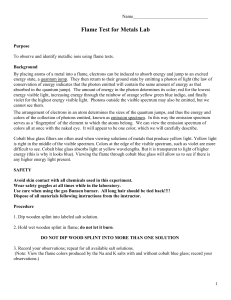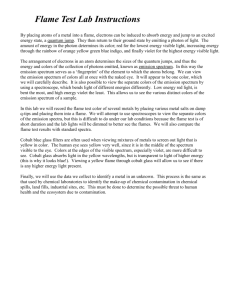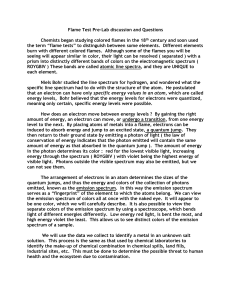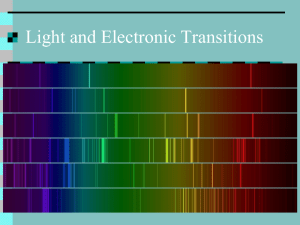Flame Test Lab
advertisement
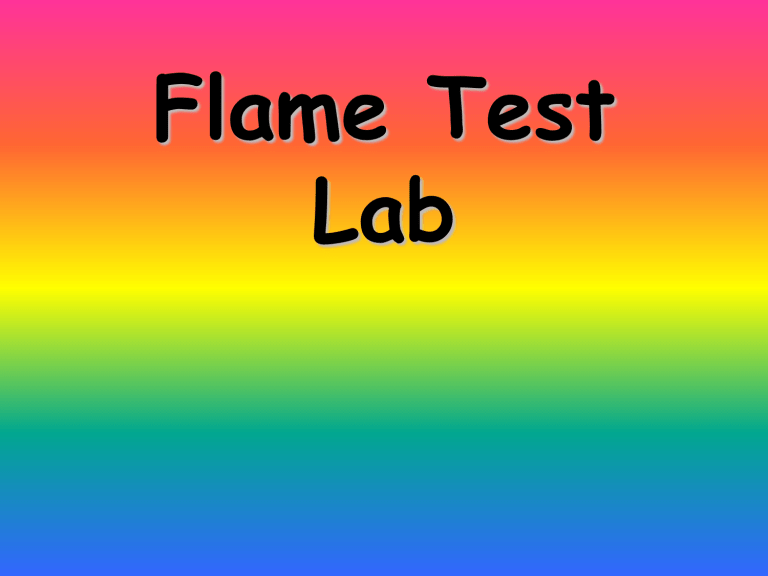
Flame Test Lab What Are We Doing in this Lab? By placing atoms of a metal into a flame, electrons can be induced to absorb energy and jump to an excited energy state, a quantum jump. When an electron temporarily occupies an energy state greater than its ground state, it is in an excited state. An electron can become excited if it is given extra energy, such as if it absorbs a photon, or packet of light or collides with a nearby atom or particle. Electrons do not stay in excited states for very long - they soon return to their ground states, emitting a photon with the same energy as the one that was absorbed. When the electrons of a certain atom return to lower orbitals from excited states, the photons they emit have energies that are characteristic of that kind of atom. This gives each element a unique fingerprint, making it possible to identify the elements present in a What Are We Doing in this Lab? The amount of energy in the photon determines its color; red for the lowest energy visible light, increasing energy through the rainbow of orange yellow green blue indigo, and finally violet for the highest energy visible light. Photons outside the visible spectrum may also be emitted, but we cannot see them. What Are We Doing in this Lab? We can view this “emission spectra” of visible colors with the naked eye. It will appear to be one color. OR – we can view the separate colors of the emission spectrum by using a spectroscope. What Are We Doing in this Lab? The spectroscope bends light of different energies differently. Low energy red light, is bent the most, and high energy violet the least. This allows us to see the various distinct colors of the emission spectrum of a sample. What Are We Doing in this Lab? In this lab we will record the flame test color of several metals by passing the metal salts captured on the wooden splints into a bunsen burner flame. What Are We Doing in this Lab? The human eye sees yellow very well, since it is in the middle of the spectrum visible to the eye. Colors at the edges of the visible spectrum, especially violet, are more difficult to see. Typically, cobalt blue glass filters are often used when viewing mixtures of metals to screen out light that is yellow in color. What Are We Doing in this Lab? Cobalt glass absorbs light in the yellow wavelengths, but is transparent to light of higher energy (this is why it looks blue!). Viewing a yellow flame through cobalt glass will allow you to see if there is any higher energy light present. No cobalt blue glass filters in our lab now. What Are We Doing in this Lab? Finally, we will use the data we collect to identify a metal in an unknown salt solution. This process is similar to the procedure used by chemical laboratories to identify the make-up of chemical contamination in chemical spills, land fills, industrial sites, etc.
